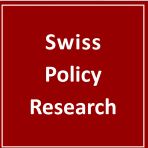Published: July 30, 2020; Updated: August 6, 2020
Share on: Twitter / Facebook
An overview of the current evidence regarding the effectiveness of face masks.
1. Studies on the effectiveness of face masks
So far, most studies found little to no evidence for the effectiveness of cloth face masks in the general population, neither as personal protective equipment nor as a source control.
- A May 2020 meta-study on pandemic influenza published by the US CDC found that face masks had no effect, neither as personal protective equipment nor as a source control. (Source)
- A July 2020 review by the Oxford Centre for Evidence-Based Medince found that there is no evidence for the effectiveness of cloth masks against virus infection or transmission. (Source)
- A Covid-19 cross-country study by the University of East Anglia found that a mask requirement was of no benefit and could even increase the risk of infection. (Source)
- An April 2020 review by two US professors in respiratory and infectious disease from the University of Illinois concluded that face masks have no effect in everyday life, neither as self-protection nor to protect third parties (so-called source control). (Source)
- An article in the New England Journal of Medicine from May 2020 came to the conclusion that cloth face masks offer little to no protection in everyday life. (Source)
- An April 2020 Cochrane review (preprint) found that face masks in the general population or health care workers didn’t reduce influenza-like illness (ILI) cases. (Source)
- An April 2020 review by the Norwich School of Medicine (preprint) found that “the evidence is not sufficiently strong to support widespread use of facemasks”, but supports the use of masks by “vulnerable individuals when in higher risk situations.” (Source)
- A July 2020 study by Japanese researchers found that cloth masks “offer zero protection against coronavirus” due to their large pore size and generally poor fit. (Source)
- A 2015 study in the British Medical Journal BMJ Open found that cloth masks were penetrated by 97% of particles and may increase infection risk by retaining moisture or repeated use. (Source)
Additional aspects
- Japan, despite its widespread use of face masks, experienced its most recent influenza epidemic with more than 5 million people falling ill just one year ago, in January and February 2019. However, unlike SARS-2, the influenza virus is transmitted by children, too.
- Many countries and US states that introduced mandatory face masks on public transport and in shops in spring or early summer, such as Argentina and California, nevertheless saw a strong increase in infections from July onwards, indicating a low effectiveness of mask policies.
- There is increasing evidence that the SARS-2 coronavirus is transmitted, at least in certain indoor settings, not only by droplets but also by smaller aerosols. However, due to their large pore size and poor fit, cloth masks cannot filter out aerosols.
- The WHO admitted to the BBC that its June 2020 mask policy update was due not to new evidence but “political lobbying”: “We had been told by various sources WHO committee reviewing the evidence had not backed masks but they recommended them due to political lobbying. This point was put to WHO who did not deny.” (D. Cohen, BBC Medical Corresponent)
- Studies in hospitals found that the wearing of medical face masks by surgeons during operations didn’t reduce post-operative (bacterial) wound infections in patients.
2. Studies claiming face masks are effective
Some recent studies argued that cloth face masks are indeed effective against the new coronavirus and could at least prevent the infection of other people. However, most of these studies suffer from poor methodology and sometimes show the opposite of what they claim.
Typically, these studies ignore the effect of other measures, the natural development of infection numbers, changes in test activity, or they compare countries with very different conditions.
An overview:
- A German study claimed that the introduction of compulsory masks in German cities had led to a decrease in infections. But the data does not support this: in some cities there was no change, in others a decrease, in others an increase in infections (see graph below). The city of Jena was an ‘exception’ only because it simultaneously introduced the strictest quarantine rules in Germany, but the study did not mention this.
- A study in the journal PNAS claimed that masks had led to a decrease in infections in three hotspots (including New York City). This did not take into account the natural decrease in infections and other measures. The study was so flawed that over 40 scientists recommended that the study be withdrawn.
- A US study claimed that mandatory masks had led to a decrease in infections in 15 states. The study did not take into account that the incidence of infection was already declining in most states at that time. A comparison with other states was not made.
- A Canadian study claimed that countries with mandatory masks had fewer deaths than countries without mandatory masks. But the study compared African, Latin American, Asian and Eastern European countries with very different infection rates and population structures.
- A much-cited meta-study in the journal Lancet claimed that masks “could” lead to a reduction in the risk of infection, but the studies considered mainly hospitals (Sars-1), medical (not cloth) masks, and the strength of the evidence was reported as “low”.



















